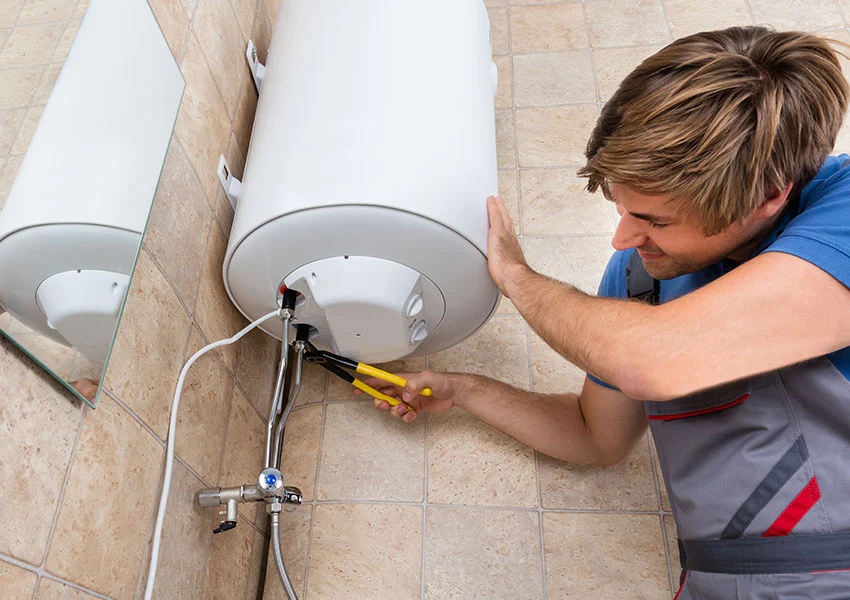Effective Strategies for Maintaining Your Home's Hot Water System
Effective Strategies for Maintaining Your Home's Hot Water System
Blog Article
Here further down yow will discover a bunch of good content regarding Tips on Maintaining a Water Heater.

Warm water is necessary for everyday comfort, whether it's for a refreshing shower or cleaning meals. To ensure your hot water system runs successfully and lasts longer, regular upkeep is crucial. This post offers sensible ideas and insights on just how to preserve your home's hot water system to avoid disturbances and costly fixings.
Intro
Maintaining your home's warm water system might seem overwhelming, however with a couple of basic steps, you can guarantee it operates efficiently for many years to come. This guide covers everything from comprehending your hot water system to DIY upkeep pointers and knowing when to call expert aid.
Significance of Keeping Your Hot Water System
Normal maintenance not just prolongs the life expectancy of your warm water system yet likewise guarantees it runs efficiently. Ignoring upkeep can result in lowered efficiency, greater power expenses, and also premature failing of the system.
Indicators Your Hot Water System Requirements Upkeep
Understanding when your warm water system needs interest can stop significant issues. Watch out for indicators such as inconsistent water temperature level, strange noises from the heating unit, or corroded water.
Understanding Your Hot Water System
Prior to diving into maintenance tasks, it's practical to understand the basic elements of your warm water system. Generally, this consists of the hot water heater itself, pipelines, anode poles, and temperature controls.
Monthly Maintenance Tasks
Routine monthly checks can assist capture small concerns prior to they escalate.
Flushing the Hot Water Heater
Flushing your water heater eliminates sediment accumulation, boosting performance and lengthening its life.
Monitoring and Replacing Anode Rods
Anode rods avoid rust inside the tank. Inspecting and replacing them when worn is vital.
Evaluating and Readjusting Temperature Level Setups
Readjusting the temperature settings ensures optimal performance and safety.
DIY Tips for Upkeep
You can execute several maintenance tasks on your own to maintain your warm water system in leading condition.
Checking for Leakages
On a regular basis check pipes and connections for leaks, as these can lead to water damages and greater costs.
Examining Stress Relief Valves
Evaluating the pressure safety valve guarantees it operates appropriately and stops extreme pressure build-up.
Shielding Pipelines
Protecting warm water pipelines minimizes heat loss and can save power.
When to Call an Expert
While DIY maintenance is helpful, some problems require specialist experience.
Facility Problems Requiring Professional Assistance
Instances include major leaks, electrical problems, or if your water heater is regularly underperforming.
Regular Specialist Maintenance Benefits
Specialist upkeep can include complete inspections, tune-ups, and making certain compliance with safety standards.
Verdict
Routine maintenance of your home's warm water system is vital for effectiveness, long life, and cost financial savings. By adhering to these suggestions and knowing when to seek specialist assistance, you can ensure a trustworthy supply of warm water without unexpected interruptions.
Water Heater Maintenance Tips
Test the TPR Valve
Shut off the power and the cold-water supply valve. Place a bucket under the pipe connected to the temperature-pressure-release (TPR) valve on the top or side of the tank. (This valve opens if the tank pressure gets too high.) Lift the valve’s tab to let some water out, then let go. If water keeps flowing, drain the tank partway, unscrew the old valve with a pipe wrench, and install a new one. Check the Anode Rod
Put a hose to the tank’s drain cock and let out a few gallons of water. Now fit a 1 1/16-inch socket onto the rod’s hex head on top of the heater (or under its top plate) and unscrew the rod. If it’s less than ½ inch thick or coated with calcium, buy a new one, wrap its threads with Teflon tape, put it back in the tank, and tighten securely. Use this segmented rod if headroom above the tank is limited. Drain the Tank and Wash Out Sediment
Drain the remaining water in the tank into the bucket, then stir up the sediment on the tank’s bottom by briefly opening the cold-water supply valve. Drain and repeat until clean water comes out of the hose. Close the drain cock, refill the tank, and turn its power back on. Adjust the Temperature
Find the temperature dial on the side of the tank and unscrew its cover. Adjust the dial to 120 degrees using a flathead screwdriver. For every 10 degrees the temperature is lowered, you can expect to save up to 5 percent in energy costs. Turn the water heater off or the thermostat down to its lowest setting if you plan to be away from home for more than three days. Insulate the Pipes
Buy some self-sticking 3/8-inch-thick foam pipe insulation that matches the pipes’ diameter. Slide the foam over the hot-and cold-water pipes as far as you can reach. Insulating the cold-water pipe prevents condensation in summer. Peel the tape and squeeze the insulation closed. If the pipe is 6 inches or less from the flue, cover it with 1-inch-thick unfaced fiberglass pipe wrap. https://www.thisoldhouse.com/plumbing/21016402/how-to-maintain-a-water-heater

Do you like reading up on Water Heater Maintenance Tips You Can't Afford to Forget? Put feedback down below. We would be pleased to see your suggestions about this content. We are looking forward that you visit us again soon. Do you know anybody else who is very much interested in the topic? Feel free to share it. Thank you for being here. Return soon.
Book Today! Report this page